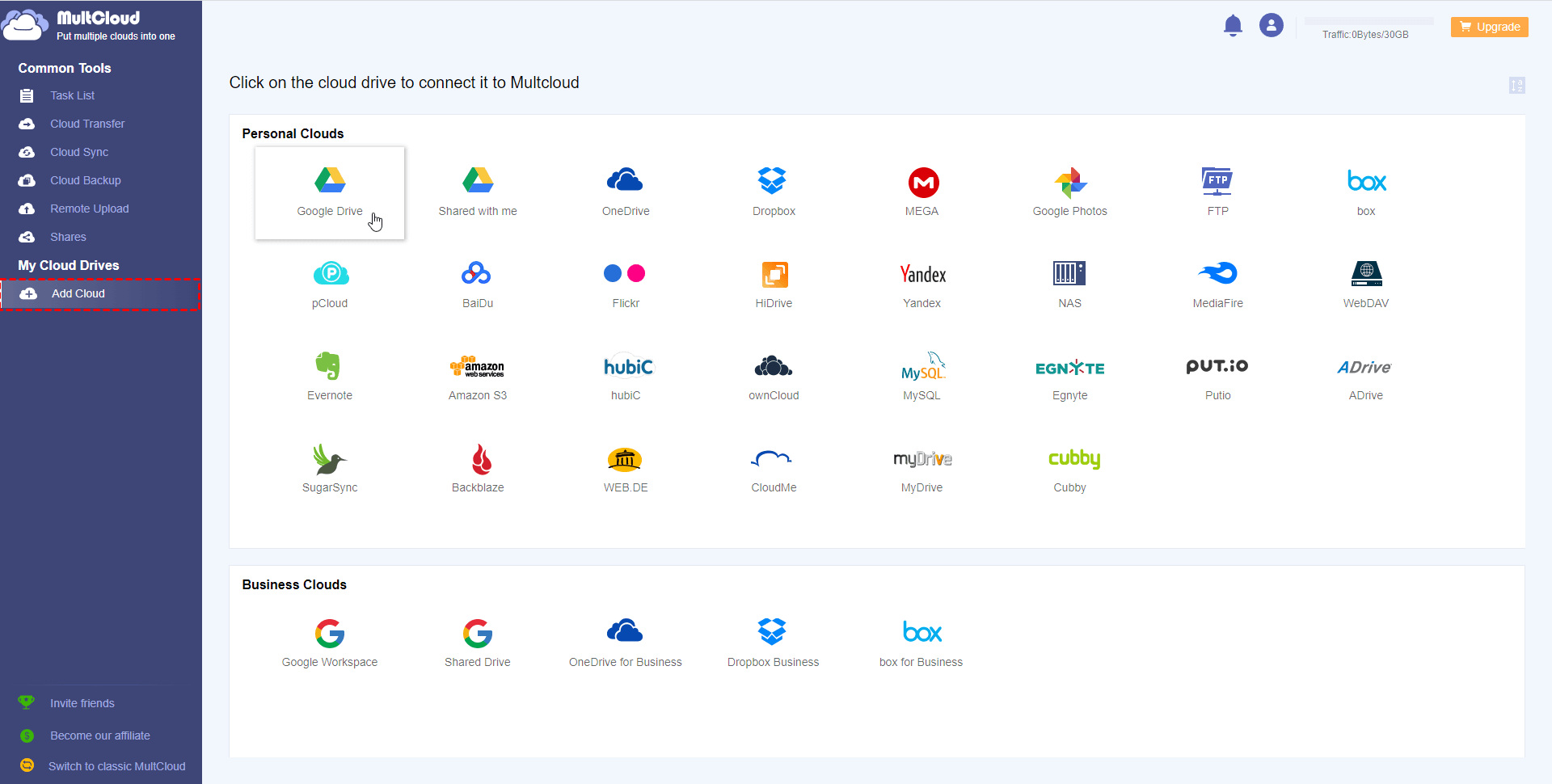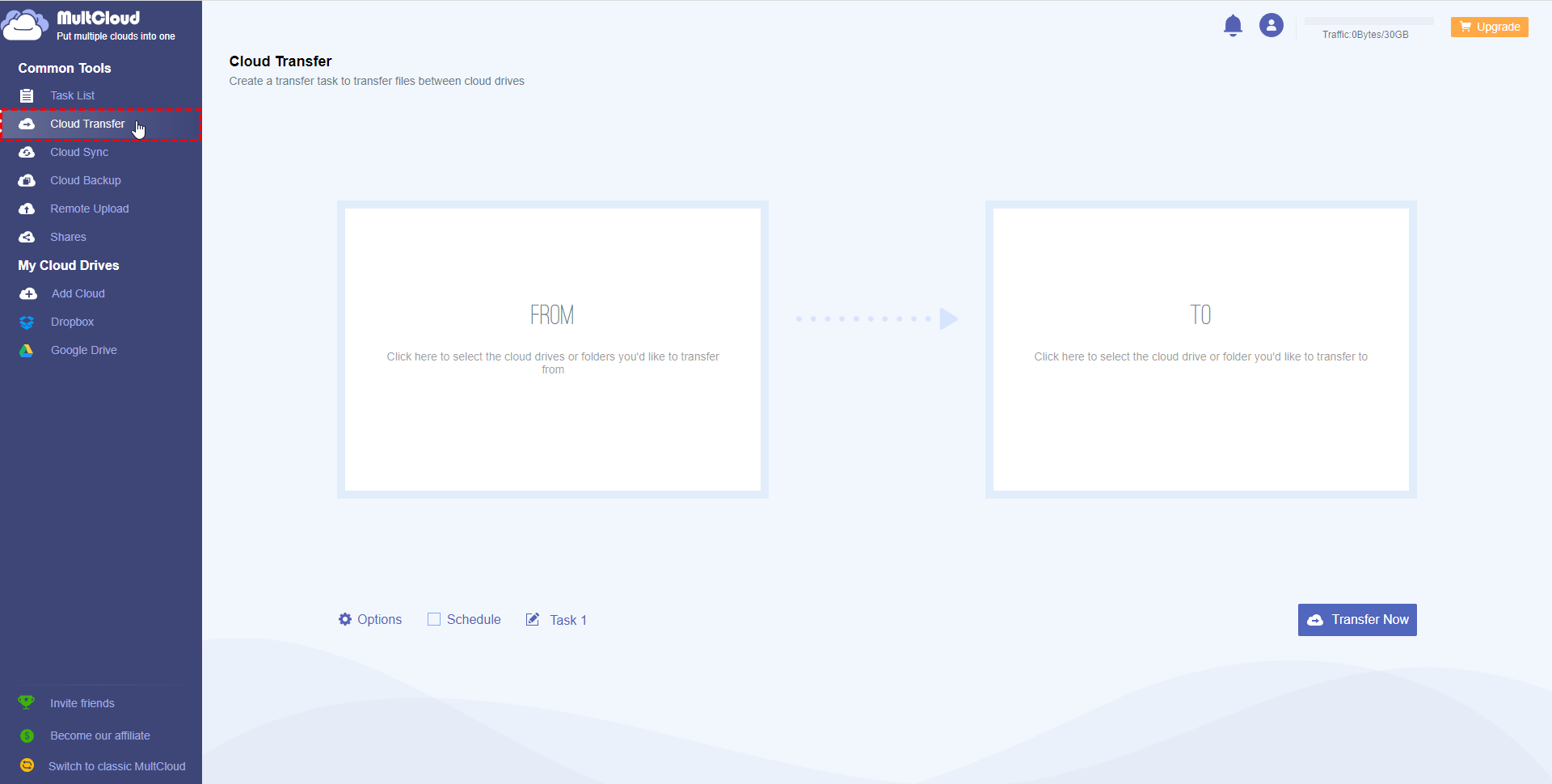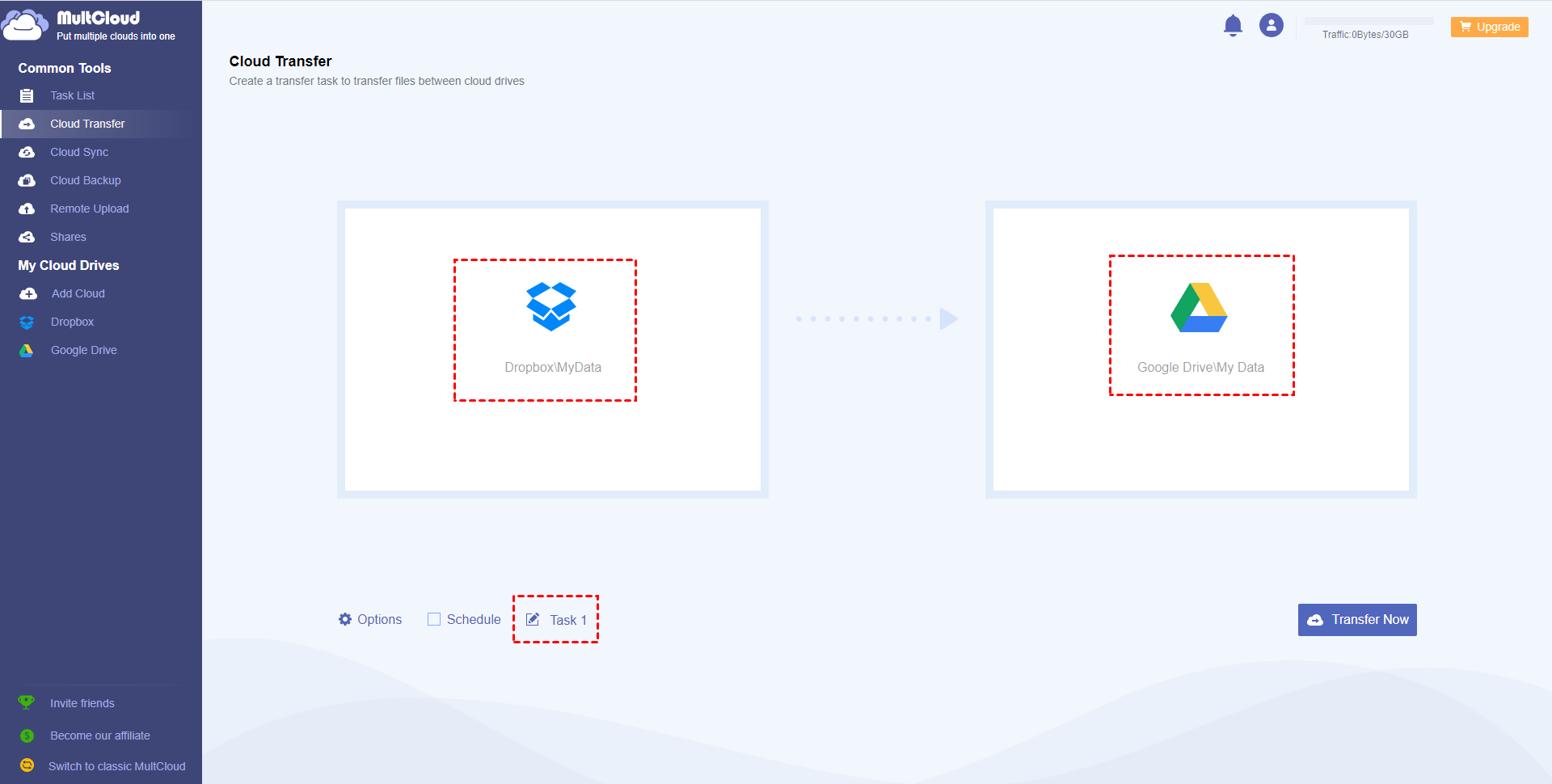In this tutorial, I will teach you how to transfer data between clouds with MultCloud.

Generally, when you need to upload data from one cloud to another cloud, you need to download files from this cloud to your local disk first, and then upload from the local disk to another cloud disk. It is a waste of time. With MultCloud, you can easily transfer data from one cloud service to another without downloading to local disk first then re-uploading. The features of MultCloud will help you save lots of time.
Step 1: Create an account in the official website of MultCloud. If you do not want to create one account, you could click "Guest Access" so you'll get one temp account immediately.

Step 2: Add the cloud services that you need to transfer data by clicking "Add Cloud", select them and follow the guidance to add them into MultCloud account one by one.

Step 3: Click "Cloud Transfer" tab, and then you will see the below interface.

Step 4: Select the source directory that you want to transfer from and the destination. We take Dropbox and Google Drive as example here. When you select the source directory, it supports selecting single files, folders or the whole cloud drive. And, it also supports adding multiple source directories. But, only support one destination location.
Tips: You can rename the transfer task by using the "Task 1" field to help you distinguish it from other tasks.

Step 5: Click "Transfer Now" to start transferring.
After clicking the "Transfer Now" button, you may click Task List button to see the details of the transfer process. Please click the arrow icon to check it. After the data transfer successfully, if you want to modify or manage tasks, you could also go to Task List, as for more details, please refer to here.
If you want to transfer the source directory regularly, you can also enable "Schedule" so that you can back up your important data in time.
When you create a new transfer task, you will see the "Schedule" option. Or if you have create the transfer task but you have not enable the "Schedule" feature, you can enable it under Task List, click the three-line button of the corresponding task then select “Schedule”.
When you tick "Schedule", you could see the following three modes. You could choose the one that you need.
You could specify some additional settings for the transfer task under "Options".
If the destination location contains the same name of the source files, you can choose the following solutions to handle it.
Tick "Delete all source files after transfer is complete" if you want to clear transferred files in source drive after migration completes.
Tick "Keep file modification date (Supports Dropbox, Google Drive, G Suite)" helps you keep the file modification date after transferring files to Dropbox, Google Drive and G Suit. But it only supports in Dropbox, Google Drive and G Suite at present.
The "Automatically rename the files with special characters and generate a script file" option, if files in the source cloud drive have special character in filename that is not allowed in the target cloud drive, the files will be renamed automatically during the transfer process and a log.html file will be created in the root directory on target cloud drive.
The "Keep all transferred files in one folder" option: Folder transfer will create the entire source folder to the destination. When this option is checked, the source folder is created to the destination. Without this option, only the data in the source folder will be transferred to the destination. For example:
You could enable "Email Notification" so you will know whether the task is complete or not. In unattended operations, a notification can be emailed containing the result of the task.
You could also filter files with certain file format during migration by configure "Filter". If you want to filter some specific type of files on source directory, you can enable this option to include or exclude files of a particular type. Specify the files that you need to ignore/exclude. For example, enter a file extension mp4, then add it
Folder transfers will create the entire source folder to the destination. Only one transfer task can be run at the same time. The number of files contained in the source folder transferred by the Cloud Transfer function cannot exceed 1000W. Multiple sources can be selected for transfer task execution, but only up to 200 sources can be selected.